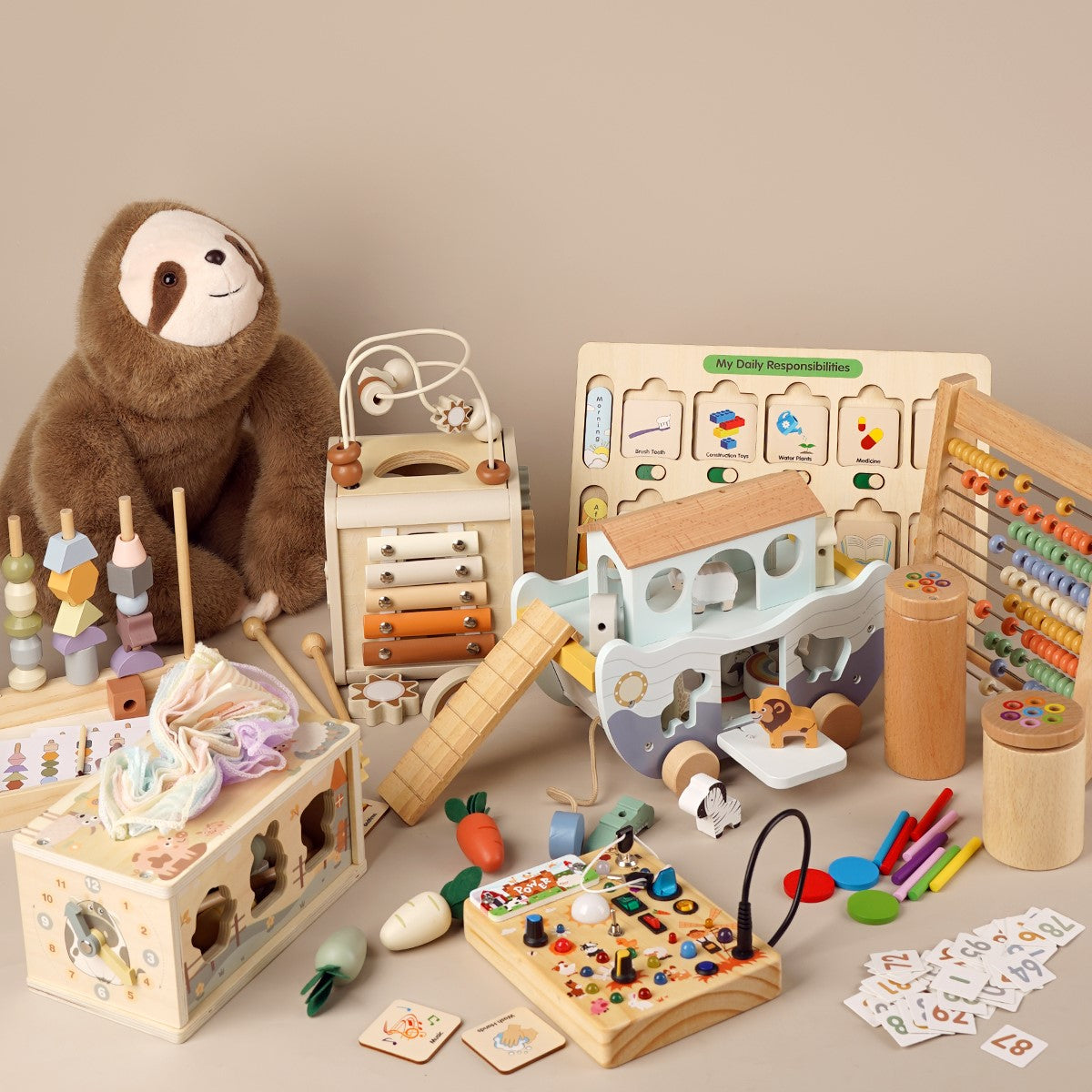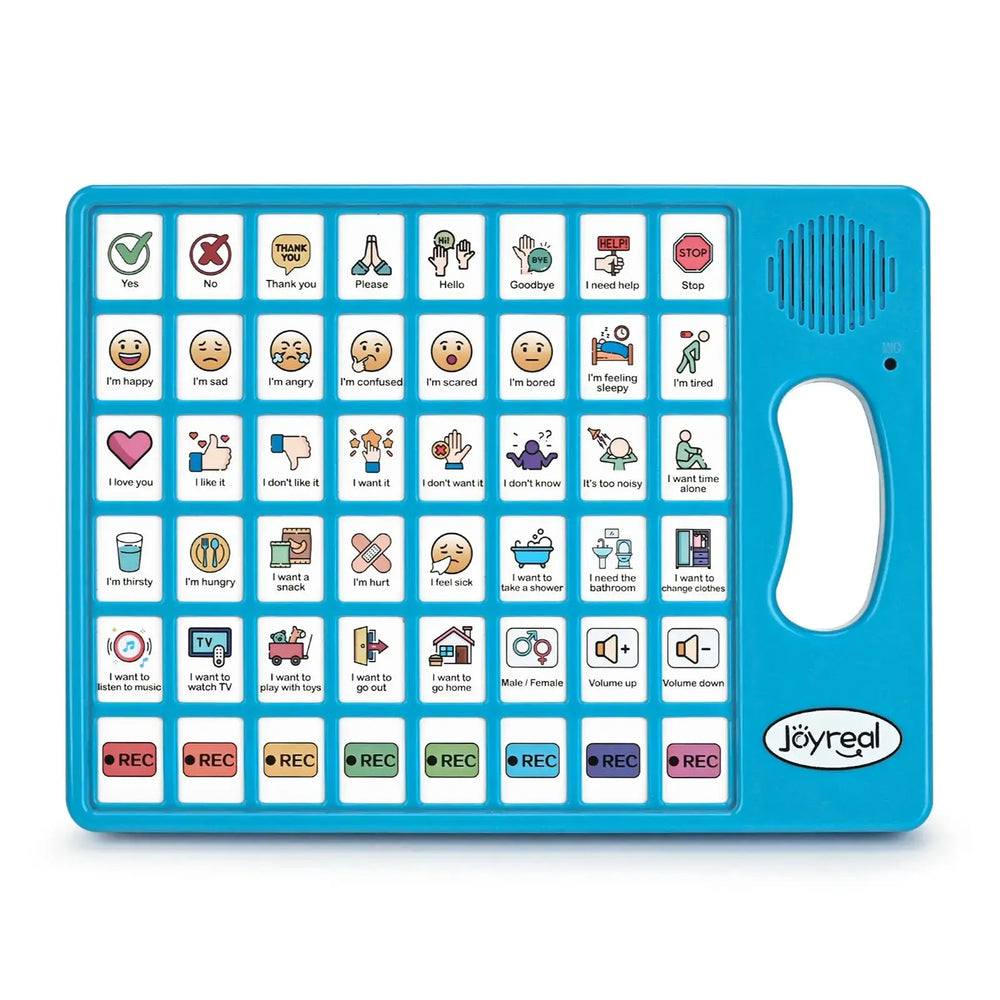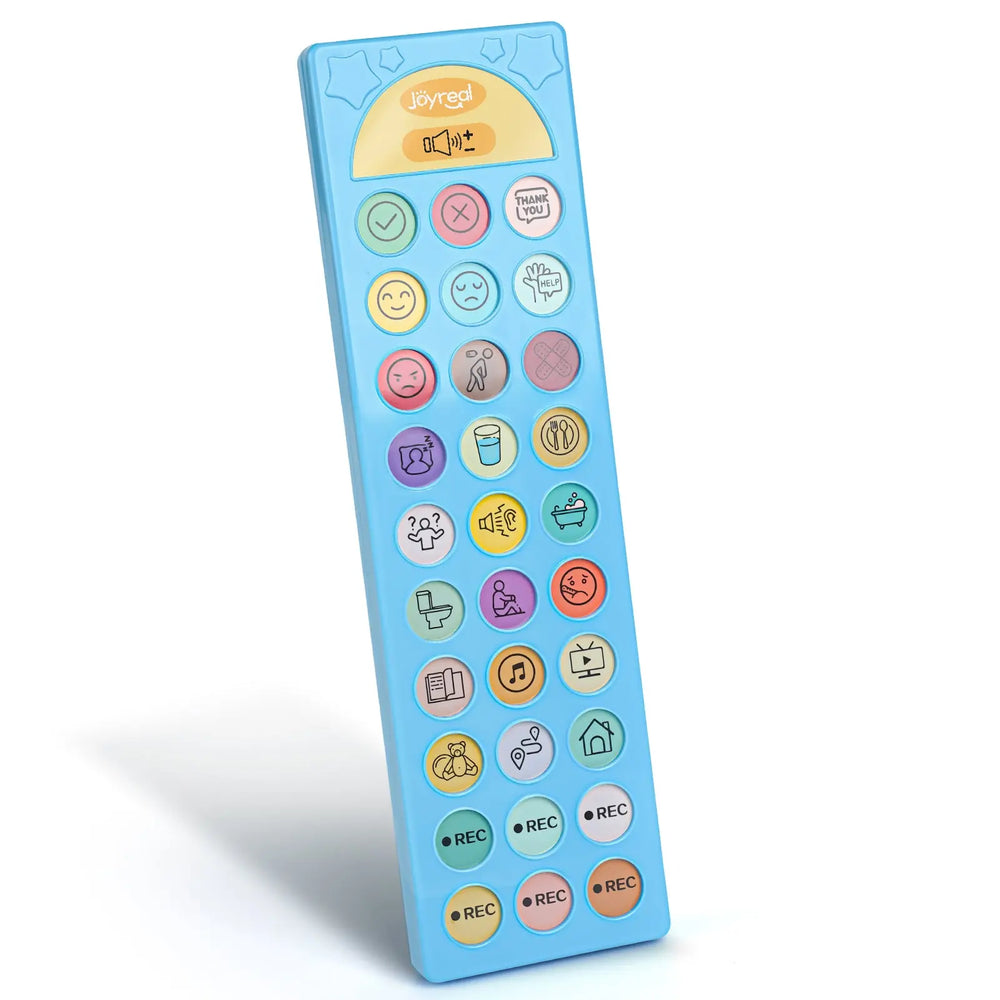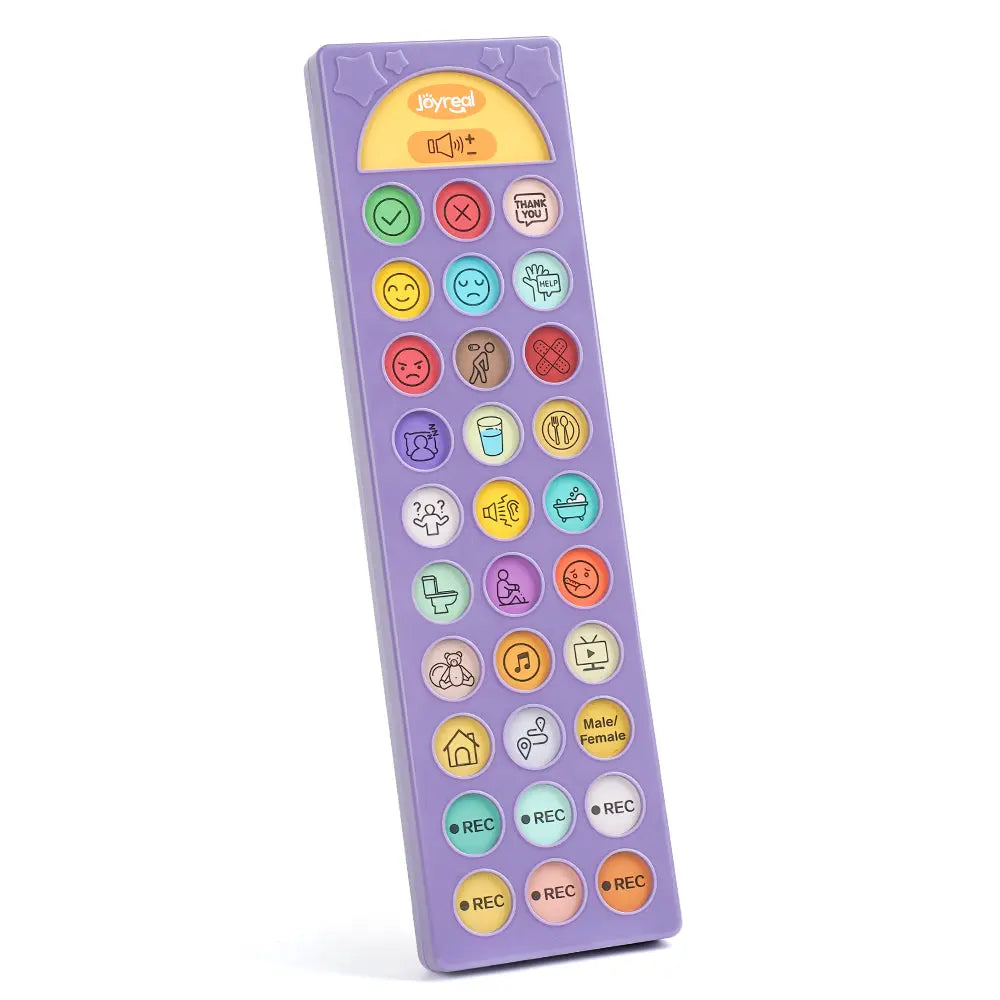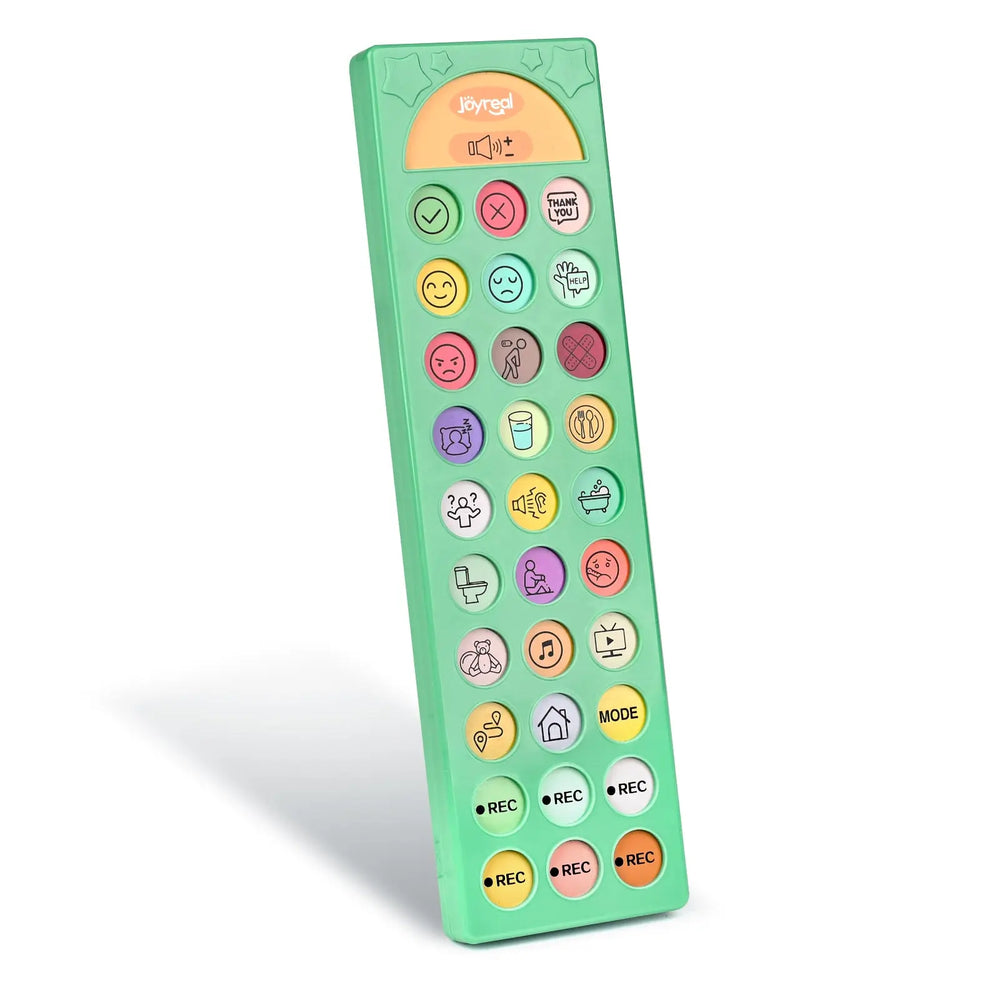AA Communication Device: Who Qualifies and How to Get Assessed
When Words Don’t Come Easily: A Parent’s Journey Toward Communication
Imagine a parent watching their child struggle to say even the simplest words — “juice,” “play,” or “hug.” Every attempt ends in frustration, both for the child trying to express and the parent longing to understand. For many families of children with autism or speech delays, this communication barrier can feel overwhelming.
That’s where the Joyreal AAC communication device makes a real difference. Designed specifically for children with autism and communication challenges, it uses visual symbols, touch-based cues, and structured prompts to help children express their needs and emotions clearly. Whether it’s during playtime, at school, or around the dinner table, the device becomes a bridge — turning silence into understanding.
Over time, parents begin noticing encouraging changes. Their child points to a symbol to ask for a favorite snack, chooses a toy independently, or uses pictures to tell how they feel. Communication becomes less about guessing and more about connecting.
For families just beginning this journey, starting with a simple, child-friendly AAC device is often the best step. The Joyreal AAC communication device offers an intuitive, affordable way to build foundational communication skills while nurturing confidence and joy in every interaction.
Who Can Benefit from an AAC Communication Device?
AAC devices are designed for individuals of all ages who face significant communication barriers. Those who commonly benefit include:
- Children with autism spectrum disorder (ASD) who have limited verbal communication.
- Individuals with developmental speech delays or apraxia of speech.
- Adults recovering from stroke or brain injury with partial speech loss.
- People with neurological conditions, such as ALS or Parkinson’s disease.
AAC devices, like the Joyreal AAC communication device, empower users to express their ideas, make choices, and engage socially—often leading to improved behavior, emotional regulation, and learning outcomes.
Eligibility: Who Qualifies for AAC Devices?
Qualification for AAC technology depends on medical and functional necessity—essentially, whether the device is required to support communication in daily life.
Key Criteria Include:
- A diagnosed communication disorder limiting speech or language use.
- A proven ability to benefit from visual or alternative communication methods.
- A clear improvement in functional outcomes—educational, social, or personal.
Medical and Functional Necessity
- Medical necessity is established when an individual’s diagnosis (such as autism, cerebral palsy, or stroke) results in substantial speech limitations.
- Functional necessity focuses on how an AAC device improves independence—for example, helping a student participate in class discussions or allowing an adult to communicate at work or home.
The AAC Assessment Process: Step-by-Step
Who Conducts the Evaluation?
Assessments are typically led by Speech-Language Pathologists (SLPs)—specialists trained to analyze speech, motor, and cognitive abilities. They often collaborate with:
- Occupational therapists
- Teachers or special educators
- Psychologists
- Family members
This team-based approach ensures the chosen AAC solution fits the user’s daily communication needs and motor capabilities.
Typical Stages of AAC Evaluation
- Referral & Initial Consultation – A doctor, educator, or parent initiates evaluation after noticing persistent communication struggles.
- Comprehensive Testing – The SLP evaluates language understanding, expressive ability, and fine motor skills, while trialing various AAC tools.
- Device Trials – Candidates try devices ranging from simple communication boards to digital systems like the Joyreal AAC communication device to identify what feels natural.
- Report & Recommendations – The SLP prepares a report outlining findings, device recommendations, and funding justification.
AAC Devices for Autism: Special Considerations
Understanding Unique Communication Profiles
Children with autism often process visual information more effectively than auditory input. The Joyreal AAC communication device leverages this strength with bright icons, visual categories, and tactile feedback—reducing sensory overload and helping children focus on communication.
Evolving With the Child
As children grow, their communication needs evolve. Regular reassessment ensures the AAC system remains effective. Starting with a simple board-based Joyreal device can help build consistency before transitioning to more complex, high-tech systems with broader vocabulary and voice output features.

Funding and Support for AAC Devices
Insurance Coverage
AAC devices are often classified as Durable Medical Equipment (DME), meaning insurance may cover the cost if medically justified. Documentation from the SLP’s evaluation is crucial. Coverage sources include:
- Private insurance or Medicaid/Medicare
- School district programs under the Individualized Education Program (IEP) framework
- Vocational rehabilitation services for adults returning to work
Grants and Financial Aid
If insurance doesn’t cover costs, families can explore nonprofit organizations and grant programs such as:
- AssistiveWare AAC Resources
- United Cerebral Palsy (UCP) Foundation
- Local or regional disability support agencies
Communication Boards vs. High-Tech AAC Systems
| Feature | Low-Tech AAC(Joyreal Communication Board) | High-Tech AAC (Speech-Generating Device) |
| Power Requirement | None | Battery or electrical |
| Ease of Use | Simple, child-friendly | Requires setup/training |
| Cost | Low | Moderate to high |
| Customization | Limited | Highly flexible |
| Best For | Early learners, visual communicators | Advanced users, multi-context communication |
Starting with a low-tech AAC option like the Joyreal communication board is often best for beginners—it’s portable, affordable, and ideal for early intervention. As communication skills advance, families can transition to more sophisticated speech-generating devices for complex expression.
Next Steps: Empower Communication, One Symbol at a Time
If you believe your child may benefit from an AAC communication device, take the first step by scheduling an evaluation with a Speech-Language Pathologist. With professional guidance and the right technology—like the Joyreal aac devices for autism—you can unlock new possibilities for expression, confidence, and connection.
The path to communication may begin small, but every word, symbol, and smile brings your family one step closer to understanding.
FAQs About AAC Communication Devices
1️⃣ Who qualifies for an AAC communication device?
- Individuals with autism, developmental speech delays, or medical conditions affecting verbal communication qualify after professional assessment.
2️⃣ How do I begin the AAC assessment process?
- Request a referral to a licensed Speech-Language Pathologist (SLP). They’ll perform tests, observe communication, and recommend the most suitable AAC system.
3️⃣ Is the Joyreal AAC communication device suitable for beginners?
- Yes. The Joyreal AAC communication device is designed for children and beginners, offering intuitive visuals that promote understanding and engagement.
4️⃣ Can AAC devices improve speech over time?
- Absolutely. Many users develop verbal language skills through consistent AAC use, as it encourages structured communication and reduces frustration.
5️⃣ Are AAC devices covered by insurance or schools?
- Yes, most healthcare plans and educational programs cover AAC devices when deemed medically or educationally necessary.
6️⃣ What’s the best way to start using an AAC device at home?
- Begin with short, routine-based communication—like choosing snacks or activities—so your child can learn naturally in comfortable, familiar settings.
Maybe it will be helpful for you:
Recent Post

Top Joyreal AAC Devices 2025: Costs, Autism Communication Tips & Smart Buying Guide
Modern AAC Devices for Autism Choosing the right autism communicati...

Why the Joyreal Drum Set Is the Best First Music Toy
Choosing a toddler’s first music toy is a surprisingly big decision...

Top Sensory and AAC Communication Board Gifts for Little Communicators
Why AAC Communication Solutions Matter AAC (Augmentative and Alter...

Why Wooden Toys Make Better Christmas Gifts?
Every year, parents face the same holiday dilemma: Should we buy th...

What Finally Helped My Toddler Speak Up?
If you’re a toddler mom, you already know how much emotional weight...

Joyreal Christmas Toys Deals 2025
Enjoy instant savings across nearly every category, from early lear...

How Wooden Montessori Toys Support a Sustainable Childhood
Most parents don’t say it out loud, but many feel the same quiet fr...

Top Christmas Gifts to Help Kids Communicate Better This Holiday Season
The holiday season brings joy, family bonding, and endless opportun...

How to Make DIY Printable Communication Boards
Communication is at the heart of every child’s development — and fo...

Top 5 Christmas Gifts That Bring Families Closer (2025 Guide)
Christmas isn’t just about the gifts — it’s about the moments we c...
